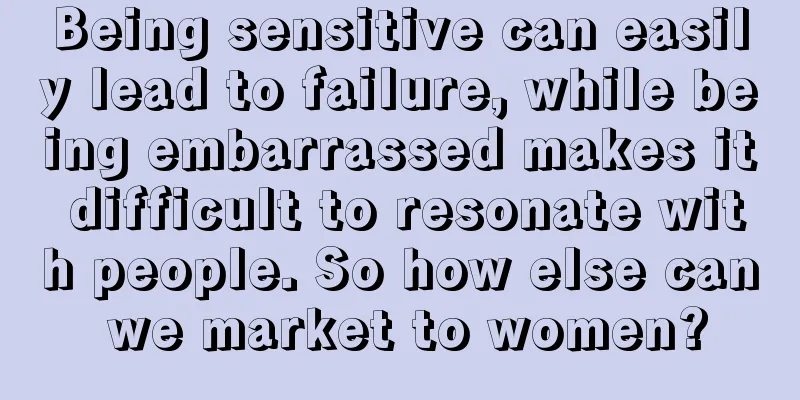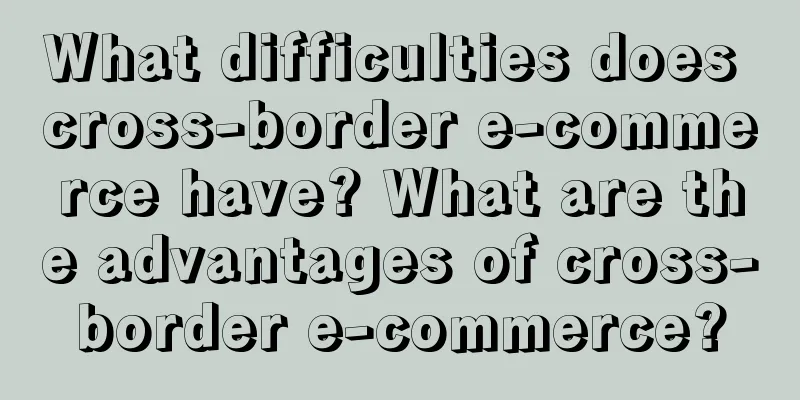Being sensitive can easily lead to failure, while being embarrassed makes it difficult to resonate with people. So how else can we market to women?

Every year on Women’s Day, “marketing to women” is difficult. If a brand plays it safe and follows the rules to make a TVC or poster, it will face the problem of homogeneity. No matter how exquisite the filming is, clichés in the theme will hardly attract attention and have no significant impact, let alone "break out of the circle". If you try to innovate, "touch" some gender issues, or write some clever marketing copy, you will most likely fail. Hao Huan Luo and MAIA ACTIVE both suffered big setbacks in their marketing for this festival due to inappropriate wording in their copywriting. This year, Nezha 2 became a huge hit, and some cinemas wanted to use the movie to create a festive atmosphere, but the poster copy narrowly positioned Madam Yin as "Nezha's mother," which also caused dissatisfaction among many netizens. Marketing is difficult, but no one wants to miss a great opportunity to stimulate women's willingness to consume. How to break through? Looking at some representative brand cases this year, many brands have learned a lot of experience from various cases in recent years. We have also summarized the "Triple Evolution Theory" of women's marketing. TVCs have become fewer and more iterativeTVC is almost a must-have marketing option for brands during every festival: it can be as short as a few dozen seconds, with celebrity spokespersons appearing to convey brand information briefly and powerfully; or it can evolve into a micro-film with a complete narrative structure, and even invite well-known directors to direct it. But on this year's International Women's Day, one very obvious trend is that there are fewer brands producing TVCs specifically for this holiday. This phenomenon is also expected. In recent years, enterprises in various industries have been very clear and strong in their demands for reducing costs, increasing efficiency and pursuing conversions. TVCs are brand advertisements and are not responsible for directly promoting sales. In addition, the current media channels are highly fragmented. Unless brands carry out full-network coverage promotion, most consumers will find it difficult to access these TVCs. In the context of the public's increasing lack of patience to watch the entire commercial, the effectiveness of TVCs has long been greatly reduced. Instead of TVC, many brands actually choose to only make lighter-weight theme posters. As an annual short-term festival, Women's Day is more suitable for this kind of marketing method that is quick to respond and easy to spread. Posters are presented in the form of images, which is not only convenient for multi-channel distribution, but also can quickly attract attention if the design is well done. For example, the sanitary napkin brand Taotao Oxygen Cotton focuses on the female group working in the front-line positions of the company, shoots a group of posters for its female employees, and publishes them on the official Weibo, creating a festive atmosphere, showing the professionalism and rigor of the brand's production process, and also reflecting the care and respect for employees. In addition to the content form, the changes at the content level are more profound. In the past, brands tended to cater to popular trends in their marketing to women, such as the early concept of "Women's Day" and later slogans such as "Pamper Yourself" and "Pleasure Yourself". Now these concepts seem outdated and few brands continue to use them this year. In fact, this year, brands have done more "reflection". This is not to simply create anxiety and then provide solutions, but to more directly acknowledge the difficulties faced by women and hope to promote the further improvement of the female-friendly social environment through their own voices, or at least play an inspiring role and find answers together with female consumers. Han Shu's short film "To Peers" is a typical example. It captures the common phenomenon of "comparison" in women's lives. By showing different women's envy of other people's lives, it ultimately reveals that "perfect peers" may just be an illusion, encouraging women to face up to pressure and take control of their own pace of life. Of course, while "reflecting", TVC is essentially still strongly related to the brand and products. Ubras's video "Not Only She Is Visible" focuses on issues that are often overlooked in women's daily lives, such as the embarrassment caused by uncomfortable underwear, and cleverly integrates product features into it; Arc'teryx's "She Is the Mountain" shows the reliability and functionality of the brand's products in extreme environments through the brave climbs of female climbers; Chando took the theme of "I am Super Powerful" and shot a series of short films, showing the confidence and charm of women of different ages and professions, echoing the brand's core concept of "You are Beautiful". ubras However, in the process of telling women's stories and values, brands also need to be wary of two major traps. The first is formalism, that is, the content is empty and slogan-like, which is difficult to resonate with the general public and is out of touch with the brand's own characteristics. The second is topic overload, that is, trying to take into account women's themes, public welfare activities and sales promotions at the same time in marketing, resulting in scattered concepts and superficial stories, which ultimately affects the overall marketing effect. Brands should first clarify the core theme and ensure that every link in integrated marketing can dig deep and present accurately around the same core theme, so as to more effectively convey brand information and leave a deep impression on consumers. Innovation is easy to fail, so let "others" tell the storyGiven the failures that occur every year when marketing to women, many brands have become smarter this year - if they can't tell the story themselves, they'll find someone else to do it. At this time, the brand’s first choice is ordinary consumers. This year, many brands have launched themed activities related to women's issues on platforms such as Weibo, Xiaohongshu and WeChat public accounts, and have stimulated users' enthusiasm for participation by collecting user stories and combining them with lucky draws. This integration of UGC interaction and lucky draw mechanisms not only promotes users' spontaneous dissemination, but also effectively avoids the problem of "self-entertainment" marketing by brands. For example, on Xiaohongshu, SK-II launched the "Nude, I Dare" challenge, encouraging users to share their bare-face stories; Zhiyouquan collected "female declarations that most want to be seen by the whole city", and the selected declarations have the opportunity to be displayed on the city's big screen and receive a brand gift box; Bawang Cha Ji invited female users to share meaningful items and the stories behind them, and also selected participants to give gifts. SK-II, Zhiyouquan, Bawangchaji Secondly, the brand also entrusted the important task of innovation and storytelling to the e-commerce platform. Take Taobao Tmall's Tmall Renewal Week as an example. The platform invited actress Jiang Yan, singer Shan Yichun and athlete Xu Mengtao to shoot a TVC short film to convey that women have countless choices, and the important thing is to have the right to choose. While conveying women's attitude towards life, this short film also guides consumers to go to the platform to choose from thousands of brands. And brands only need to participate to boost sales through the big promotion. In addition, the brand also invites media professionals, artists, scholars and other professionals to provide professional and in-depth interpretations of women's issues. L'Oréal Paris has linked up with multiple podcasts on Xiaoyuzhou to launch a special project called "It's OK, Every Step Is Worth It", which uses the stories of podcast hosts and guests to convey thoughts, opinions and stories on women's issues. At the same time, the brand also broadcast live on Weibo and Xiaohongshu, allowing viewers to immerse themselves in the podcast recording scene. Lululemon invited fitness expert and writer Joan MacDonald to share her healthy lifestyle philosophy during the spring launch. Joan changed her lifestyle at the age of 70 due to chronic diseases. Through healthy diet and regular exercise, she can now lift 60 kilograms at the age of 78. Her story can also inspire more women to pursue a healthy life. Letting others tell stories seems to completely avoid risks, and professionals can also talk about professional concepts. However, there are still two points that brands need to pay attention to: First, avoid blindly pursuing momentum, which will lead to the deformation of activities. This problem often occurs in social media interactive activities. If a brand collects stories in a big way, but the subsequent marketing cannot keep up, and the lucky draw rewards are stingy, it will seriously affect its reputation. Second, avoid the risk of "consuming suffering." Brands can collect stories, but should avoid focusing too much on "painful" stories. Although such stories may attract attention, they may also cause controversy and damage the brand image. Brands should pay more attention to the positive value and inspiration of stories. Focus on offline activities and create a public space for women's issuesThis year, many brands are no longer limited to the fierce competition for online traffic, but have shifted the focus of Women's Day activities to offline, conveying deeper brand concepts through interactive experiences in physical spaces. The consumer industry often says that "stores are the best advertisements", so there is a category of brands that transform stores into exclusive spaces for holiday theme events, giving them a new meaning that goes far beyond the traditional sales function. Stores are no longer just cold displays of goods, but have become venues for theme events, community gatherings, and member-exclusive events. For example, from March 1 to 9 this year, Aesop launched a series of activities called "Her Story, Her Expression, Her Voice, Her Bloom" in stores across the country, building an exclusive spiritual space for women through literature, art, music and other forms. At the same time, Guanxia launched a new fragrance and art capsule series with the theme of "Playing with the World". It also worked with female creators to co-create a poetry collection. Consumers can explore freedom and imagination in the store through multiple dimensions such as fragrance, art, and poetry. The mall also made a splash on Women's Day this year. Many malls displayed posters encouraging women on their big screens. At the same time, Jingfeng Center also announced that it would upgrade to a "more female-friendly mall", jointly launched a special Women's Day plan with multiple brands, and comprehensively upgraded the mall's female-friendly facilities to effectively solve the pain points of women in their daily shopping. Another type of brand chooses to curate events at city landmarks. Looking back at last year, many fashion and luxury brands have successfully held a number of pop-up stores and curatorial events in popular landmarks and characteristic neighborhoods in Shanghai. These activities quickly fermented online and became hot topics on social media. Offline, they created a more three-dimensional and distinctive brand image through unique exhibition design, attitude-filled brand declarations, and friendly and interesting interactive experiences. This year, Valentino followed this mature marketing strategy and planned a series of activities called "Walking in the City, Meeting Her Power" with Suzhou River in Shanghai as the center. It covers three major sections: photography, music and literature: exhibiting the works of Japanese photographer Rinko Kawauchi at Fotografiska Image Art Center to explore photography art; holding the Women's Live House music party at the Bund Yuanxin Tian'an Hall to showcase the talents of female musicians; and cooperating with Utopia Bookstore to hold a women's reading club to explore women's issues through literature. It is not difficult to find that the offline activities of these brands lasted for nearly a week, and the content was rich and diverse, forming a complete series, effectively avoiding the "cultural hollow shell" phenomenon caused by a single activity. And by widely inviting women from different fields to participate, the brand can ensure the depth and breadth of the event, and to a certain extent, it can effectively enhance the public's participation experience and reduce negative feedback on social media due to poor experience. To sum up the above, the essence of the iteration of marketing strategies is that brands have begun to consciously abandon the short-sighted approach of simply leveraging women's issues to harvest traffic, and instead seek more far-reaching and lasting impacts. True female marketing is not an activity for one week or one day, but a sincere presence for 365 days. Consumers will eventually vote with their feet. When the consumption boom of Women's Day fades, whether those carefully designed gender-friendly words can be transformed and presented in the brand's service and product design will be the touchstone for testing the brand in the long term. Author: Lv Yue |
<<: The boss decided to become the top
>>: Is Xiaohongshu killing vertical communities?
Recommend
How to report Amazon misplaced categories? How to choose the right category?
In the vast world of Amazon products, each product...
More than 300 brands have joined the market, and short drama marketing is still popular
From Hansu's "saturation attack" to ...
Taobao TV live streaming: live streaming sales usher in a new era
In the digital age, every technological innovation...
Talking about brands from a story of a popular homestay in Sanya
This article explores the question of whether and ...
WeChat releases its rights, video account e-commerce will hand over the most difficult work to third parties
This article describes the adjustment and promotio...
Stocking up on hotels during Double 11 Shopping Festival has become the new social currency for the middle class
The consumption habits of middle-class families ar...
Dong Yuhui’s most amazing product promotion copywriting is all the rage on the Internet!
Dong Yuhui describes the products through knowledg...
Lao Xiang Ji publishes its dish traceability report. Isn’t it afraid that its peers will copy it?
This article delves into the strategic intentions ...
Haidilao uses three steps to target young people
As traditional culture becomes more and more popul...
“Pay first, eat later”, can the paid membership system really save Xiabu Xiabu?
Xiapu Xiabu is a chain hotpot brand that uses a me...
The Paris Olympics are approaching. Which brands are already at the starting line?
With the Paris Olympics approaching, many brands h...
There is no top female star on TikTok
This article explores the reasons behind the lack ...
How to cancel an Amazon store? Process introduction
Amazon has a lot of traffic, so it is a good choic...
The public account [Content Boost] is in internal testing, and the traffic is coming!
WeChat official accounts recently launched a new f...
It is said that Xiaohongshu's internal beta test directly attracts microblogs
Xiaohongshu's latest developments may be resha...









